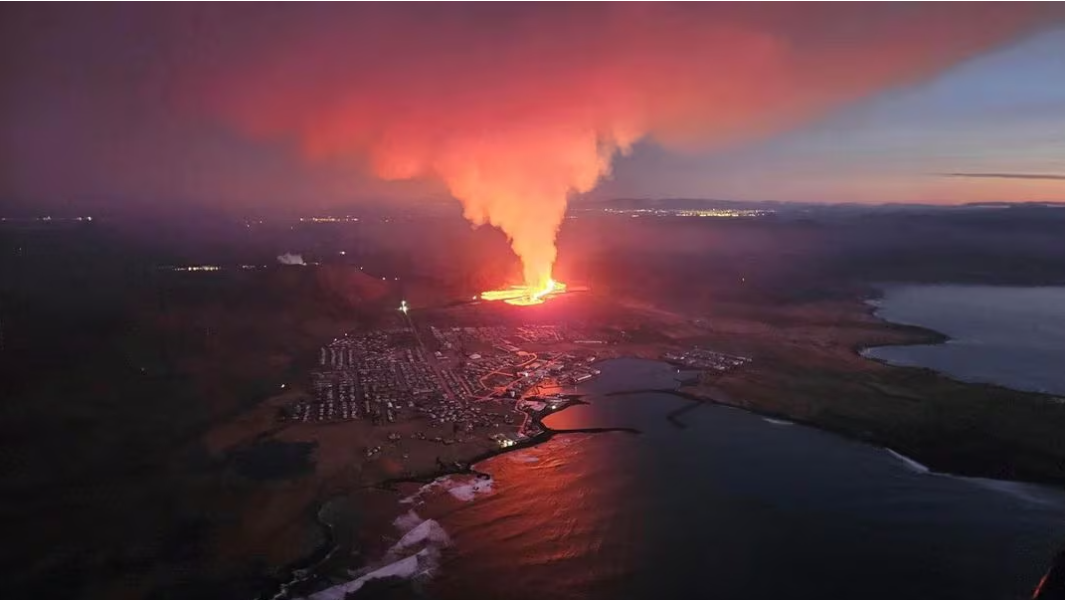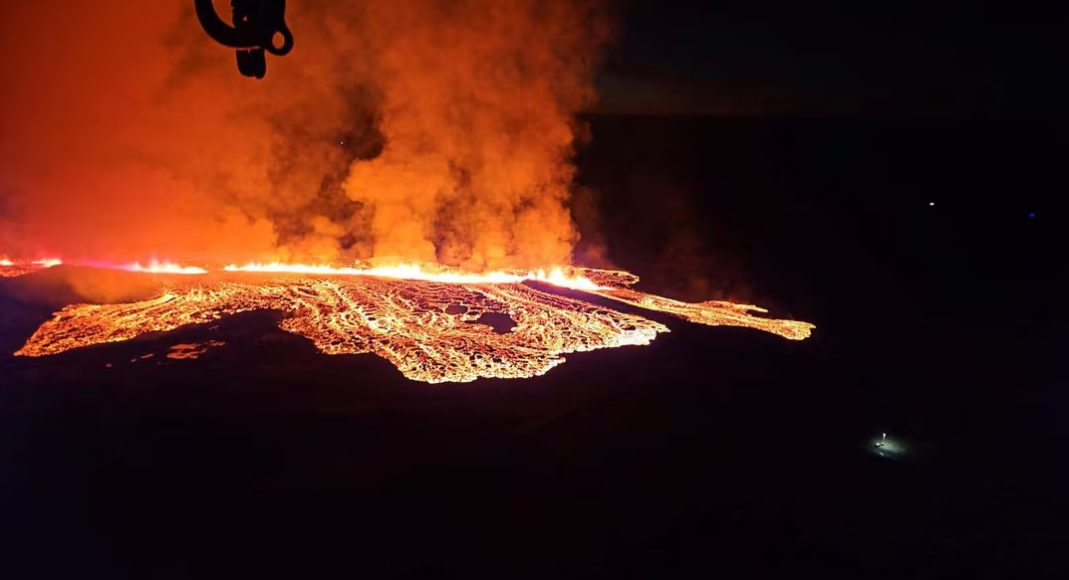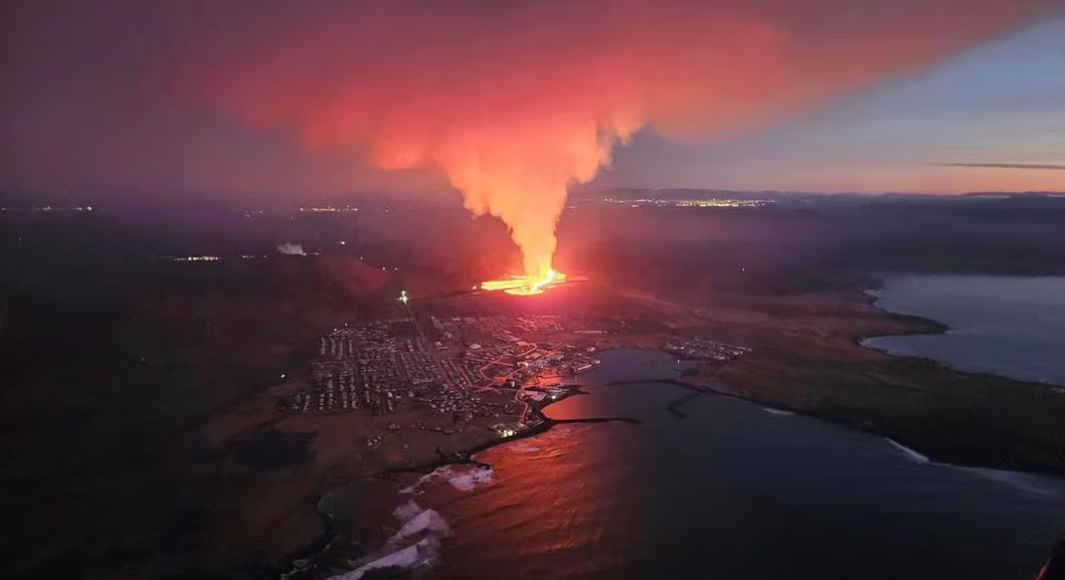
A large-scale volcanic eruption has begun on the Reykjanes Peninsula in Iceland (Photo)
On Sunday, January 14, the Icelandic Meteorological Office reported that a volcanic eruption occurred in the southwest of the country, the fifth on the Reykjanes Peninsula since 2021.
Situated between the Eurasian and North American tectonic plates, the two largest on the planet, Iceland is a seismic and volcanic hotspot as the two plates move in opposite directions.
According to the Civil Protection Agency, a coast guard helicopter was sent to assess the situation and determine the exact location of the eruption.
The eruption began north of the fishing town of Grindavik, but it was still unclear where the lava was coming from and in which direction it was flowing.
Mount Etna wakes up on the island of Sicily
Experts from the National Institute of Geophysics and Volcanology at the Etna Observatory in Catania are monitoring the situation and analyzing images of the eruption and the release of ash from a network of surveillance cameras.
The height of the eruptive column from the southeastern crater of the volcano reached about 4.5 thousand meters. m above sea level.
The eruption, according to scientists, is in a paroxysmal phase.
The volcanic ash spreading forecast and modeling data indicate an east-southeast direction of the volcanic sand fall. Reports of such fragments falling have been reported in several countries, such as Milo and Zafferana-Etnea.
It is reported that the current phase of Etna’s eruption, which is now limited to the top of the volcano, does not affect the operation of Vincenzo Bellini International Airport in Catania.
The eruption was accompanied by a steady increase in the level of Etna’s “tremor,” which signals the rise of hot magma in the internal channels of the “volcanic building” and portends lava fountains with a strong gas emission.




